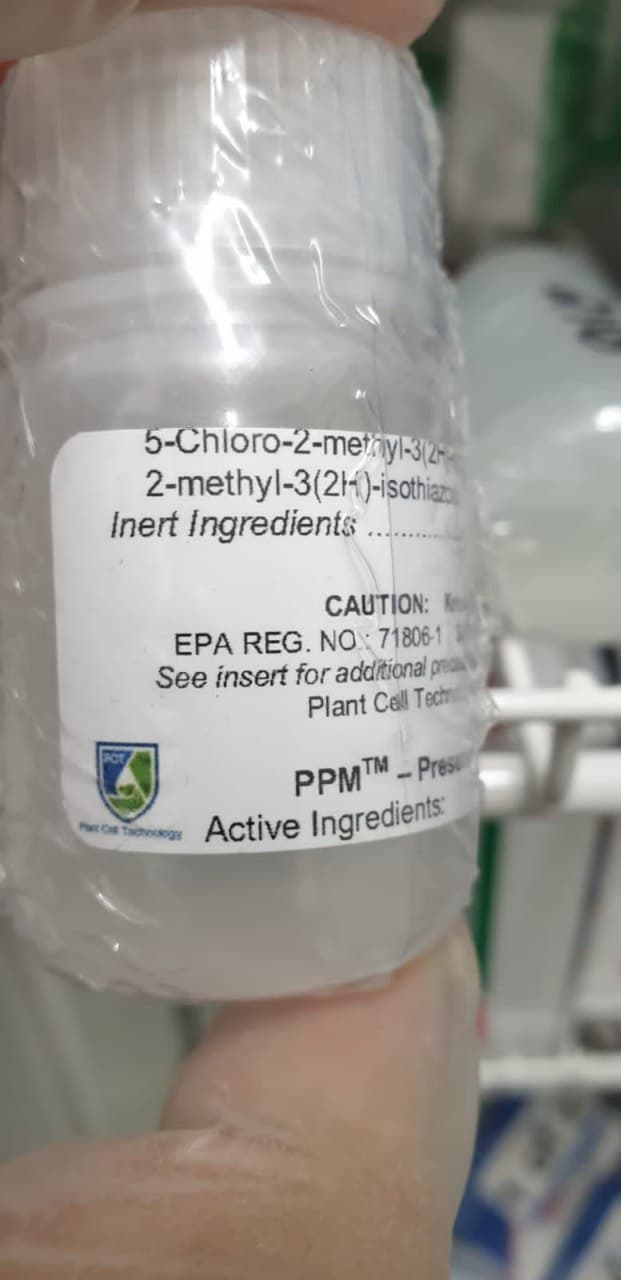Modelli animali sperimentali suggeriscono che l’acido urico potrebbe avere un ruolo patogeno nello sviluppo precoce dell’ipertensione primaria. Abbiamo ipotizzato che l’acido urico sierico sia correlato alla pressione sanguigna nei bambini con ipertensione primaria di nuova insorgenza, non trattata. Abbiamo valutato 125 bambini consecutivi inviati al programma renale pediatrico Baylor per la valutazione dell’ipertensione. Nessuno dei soggetti era stato precedentemente valutato o trattato per l’ipertensione. I bambini avevano un’età compresa tra 6 e 18 anni (media, 13,4 +/- 3,3) e avevano una normale funzione renale (clearance della creatinina> 80 mL x min (-1) x 1,73 m (-2)).
Sessantatré bambini avevano ipertensione primaria, 40 avevano ipertensione secondaria e 22 avevano ipertensione da camice bianco. Quaranta controlli con pressione sanguigna normale sono stati reclutati dalla clinica renale. I livelli di acido urico erano direttamente correlati con la pressione sanguigna sistolica (r = 0,80, P = 0,0002) e diastolica (r = 0,66, P = 0,0006) nei controlli e nei soggetti con ipertensione primaria ed erano indipendenti dalla funzione renale. Concentrazioni sieriche di acido urico> 5,5 mg / dL sono state trovate nell’89% dei soggetti con ipertensione primaria, nel 30% con ipertensione secondaria, nello 0% con ipertensione da camice bianco e nello 0% dei controlli.
Concludiamo che l’acido urico sierico è direttamente correlato alla pressione sanguigna nei bambini non trattati e che un valore di acido urico sierico> 5,5 mg / dL in un adolescente valutato per l’ipertensione suggerisce fortemente l’ipertensione primaria rispetto all’ipertensione da camice bianco o secondaria. Questi risultati sono coerenti con l’ipotesi che l’acido urico possa avere un ruolo nella patogenesi precoce dell’ipertensione primaria.
Fourteen questions from the Kiddie Schedule for Affective Disorders and Schizophrenia for School-Age Children-Present Episode (K-SADS-P) 1986 version plus a new item assessing mood lability were used to construct a clinician-rated mania rating scale (K-SADS-MRS). Interrater reliability was determined prospectively with 22 patients from a bipolar outpatient clinic. Sensitivity to treatment effects was determined in a separate cohort of 23 patients.
Valutazione funzionale dei pazienti pediatrici con dolore: proprietà psicometriche dell’inventario della disabilità funzionale.
L’inventario della disabilità funzionale (FDI; Walker LS, Greene JW. L’inventario della disabilità funzionale: misurazione di una dimensione trascurata dello stato di salute del bambino. J Pediatr Psychol 1991; 16: 39-58) valuta le limitazioni dell’attività in bambini e adolescenti con una varietà di pediatria condizioni. Questo studio ha valutato le proprietà psicometriche dell’FDI nei pazienti pediatrici con dolore. I partecipanti includevano 596 pazienti con dolore addominale cronico, di età compresa tra 8 e 17 anni, e un sottogruppo dei loro genitori (n = 151) che hanno completato l’FDI e le misure di dolore, limitazioni nelle attività scolastiche e sintomi somatici e depressivi durante una visita clinica.
L’affidabilità del test-retest era alta a 2 settimane (rapporto del bambino, .74; rapporto del genitore, .64) e moderato a 3 mesi (rapporto del bambino, .48; rapporto del genitore, .39). L’affidabilità della coerenza interna è stata eccellente, con un range da .86 a .91. La validità è stata supportata da correlazioni significative dei punteggi FDI riportati da genitori e figli con misure di disabilità, dolore e sintomi somatici legati alla scuola. I risultati dello studio si aggiungono a un corpo crescente di letteratura empirica a supporto dell’affidabilità e della validità dell’FDI per la valutazione funzionale dei pazienti pediatrici con dolore cronico.
L’esposizione alle spore disperse nell’aria della muffa comune Alternaria alternata è stata implicata negli attacchi di asma. Tale esposizione è particolarmente frequente nel Midwest durante i mesi estivi e autunnali. Per determinare il ruolo di A. alternata nell’innescare gravi attacchi di asma, abbiamo studiato i casi di 11 pazienti con asma che avevano avuto un arresto respiratorio improvviso e determinato la frequenza di sensibilità a questo allergene in questi pazienti.
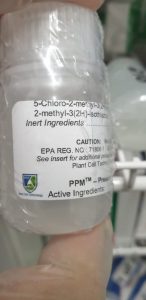
Consegna genica sistemica in specie di grandi dimensioni per il targeting del midollo spinale, del cervello e dei tessuti periferici per i disturbi pediatrici.
Il virus adeno-associato di tipo 9 (AAV9) è un potente strumento per il rilascio di geni in tutto il sistema nervoso centrale (SNC) dopo l’iniezione endovenosa. I risultati preclinici nei modelli pediatrici di atrofia muscolare spinale (SMA) e disturbi da accumulo lisosomiale forniscono un caso convincente per portare l’AAV9 alla clinica. Un passo importante della traduzione è dimostrare un efficiente targeting del sistema nervoso centrale in animali di grandi dimensioni di varie età. Nel presente studio, abbiamo testato AAV9 iniettato sistemicamente in macachi cynomolgus, somministrato alla nascita fino ai 3 anni di età per il targeting del sistema nervoso centrale e dei tessuti periferici.
Mostriamo che AAV9 era efficiente nell’attraversare la barriera emato-encefalica (BBB) in tutti i punti temporali studiati. L’espressione del transgene è stata rilevata principalmente nelle cellule gliali in tutto il cervello, nei neuroni dei gangli della radice dorsale e nei neuroni motori all’interno del midollo spinale, fornendo fiducia per la traduzione ai pazienti SMA. L’iniezione sistemica ha anche mirato efficacemente ai muscoli scheletrici e agli organi periferici.
 Single Donor Human Male Fecal Matter |
|
IRHUSFMMAL1 |
Innovative research |
each |
EUR 382 |
|
|
|
Description: Single Donor Human Male Fecal Matter |
 Single Donor Human Male Fecal Matter |
|
IRHUSFMMAL5 |
Innovative research |
each |
EUR 3566 |
|
|
|
Description: Single Donor Human Male Fecal Matter |
 Single Donor Human Female Fecal Matter |
|
IRHUFSMFEM1 |
Innovative research |
each |
EUR 382 |
|
|
|
Description: Single Donor Human Female Fecal Matter |
 Single Donor Human Female Fecal Matter |
|
IRHUFSMFEM5 |
Innovative research |
each |
EUR 3566 |
|
|
|
Description: Single Donor Human Female Fecal Matter |
 Single Donor Human Meconium Fecal Matter |
|
IRHUSFMME100MG |
Innovative research |
each |
EUR 322 |
|
|
|
Description: Single Donor Human Meconium Fecal Matter |
 Single Donor Human Meconium Fecal Matter |
|
IRHUSFMME1GM |
Innovative research |
each |
EUR 1063 |
|
|
|
Description: Single Donor Human Meconium Fecal Matter |
 Single Donor Human Meconium Fecal Matter |
|
IRHUSFMME2X1GM |
Innovative research |
each |
EUR 1966 |
|
|
|
Description: Single Donor Human Meconium Fecal Matter |
 Single Donor Human Rotavirus Positive Fecal Matter |
|
IRHUSFMROT1 |
Innovative research |
each |
EUR 435 |
|
|
|
Description: Single Donor Human Rotavirus Positive Fecal Matter |
 Single Donor Human Rotavirus Positive Fecal Matter |
|
IRHUSFMROT5 |
Innovative research |
each |
EUR 2175 |
|
|
|
Description: Single Donor Human Rotavirus Positive Fecal Matter |
 Single Donor Human C. jejuni Positive Fecal Matter |
|
IRHUSFMCJ1 |
Innovative research |
each |
EUR 486 |
|
|
|
Description: Single Donor Human C. jejuni Positive Fecal Matter |
 Single Donor Human C. jejuni Positive Fecal Matter |
|
IRHUSFMCJ5 |
Innovative research |
each |
EUR 2428 |
|
|
|
Description: Single Donor Human C. jejuni Positive Fecal Matter |
 RealScreen Pediatric FSH ELISA Kit |
|
EL103-096 |
GenDepot |
96T |
EUR 2198.4 |
 Single Donor Human Pediatric Serum |
|
ISERSPED031 |
Innovative research |
each |
EUR 269 |
|
|
|
Description: Single Donor Human Pediatric Serum |
 Single Donor Human Pediatric Serum |
|
ISERSPED035 |
Innovative research |
each |
EUR 1268 |
|
|
|
Description: Single Donor Human Pediatric Serum |
 Single Donor Human Pediatric Serum |
|
ISERSPED11141 |
Innovative research |
each |
EUR 269 |
|
|
|
Description: Single Donor Human Pediatric Serum |
 Single Donor Human Pediatric Serum |
|
ISERSPED11145 |
Innovative research |
each |
EUR 1268 |
|
|
|
Description: Single Donor Human Pediatric Serum |
 Single Donor Human Pediatric Serum |
|
ISERSPED15171 |
Innovative research |
each |
EUR 269 |
|
|
|
Description: Single Donor Human Pediatric Serum |
 Single Donor Human Pediatric Serum |
|
ISERSPED15175 |
Innovative research |
each |
EUR 1268 |
|
|
|
Description: Single Donor Human Pediatric Serum |
 Single Donor Human Pediatric Serum |
|
ISERSPED460 |
Innovative research |
each |
EUR 269 |
|
|
|
Description: Single Donor Human Pediatric Serum |
 Single Donor Human Pediatric Serum |
|
ISERSPED465 |
Innovative research |
each |
EUR 1268 |
|
|
|
Description: Single Donor Human Pediatric Serum |
 Single Donor Human Pediatric Serum |
|
ISERSPED7101 |
Innovative research |
each |
EUR 269 |
|
|
|
Description: Single Donor Human Pediatric Serum |
 Single Donor Human Pediatric Serum |
|
ISERSPED7105 |
Innovative research |
each |
EUR 1268 |
|
|
|
Description: Single Donor Human Pediatric Serum |
 Single Donor Pediatric Human Urine |
|
IRHUSUREPED10131 |
Innovative research |
each |
EUR 322 |
|
|
|
Description: Single Donor Pediatric Human Urine |
 Single Donor Pediatric Human Urine |
|
IRHUSUREPED10135 |
Innovative research |
each |
EUR 1526 |
|
|
|
Description: Single Donor Pediatric Human Urine |
 Single Donor Pediatric Human Urine |
|
IRHUSUREPED141 |
Innovative research |
each |
EUR 322 |
|
|
|
Description: Single Donor Pediatric Human Urine |
 Single Donor Pediatric Human Urine |
|
IRHUSUREPED14171 |
Innovative research |
each |
EUR 322 |
|
|
|
Description: Single Donor Pediatric Human Urine |
 Single Donor Pediatric Human Urine |
|
IRHUSUREPED14175 |
Innovative research |
each |
EUR 1526 |
|
|
|
Description: Single Donor Pediatric Human Urine |
 Single Donor Pediatric Human Urine |
|
IRHUSUREPED145 |
Innovative research |
each |
EUR 1526 |
|
|
|
Description: Single Donor Pediatric Human Urine |
 Single Donor Pediatric Human Urine |
|
IRHUSUREPED591 |
Innovative research |
each |
EUR 322 |
|
|
|
Description: Single Donor Pediatric Human Urine |
 Single Donor Pediatric Human Urine |
|
IRHUSUREPED595 |
Innovative research |
each |
EUR 1526 |
|
|
|
Description: Single Donor Pediatric Human Urine |
 Single Donor Human Pediatric Plasma |
|
IPLASPED031 |
Innovative research |
each |
EUR 253 |
|
|
|
Description: Single Donor Human Pediatric Plasma |
 Single Donor Human Pediatric Plasma |
|
IPLASPED035 |
Innovative research |
each |
EUR 1176 |
|
|
|
Description: Single Donor Human Pediatric Plasma |
 Single Donor Human Pediatric Plasma |
|
IPLASPED11141 |
Innovative research |
each |
EUR 253 |
|
|
|
Description: Single Donor Human Pediatric Plasma |
 Single Donor Human Pediatric Plasma |
|
IPLASPED11145 |
Innovative research |
each |
EUR 1176 |
|
|
|
Description: Single Donor Human Pediatric Plasma |
 Single Donor Human Pediatric Plasma |
|
IPLASPED15171 |
Innovative research |
each |
EUR 253 |
|
|
|
Description: Single Donor Human Pediatric Plasma |
 Single Donor Human Pediatric Plasma |
|
IPLASPED15175 |
Innovative research |
each |
EUR 1176 |
|
|
|
Description: Single Donor Human Pediatric Plasma |
 Single Donor Human Pediatric Plasma |
|
IPLASPED461 |
Innovative research |
each |
EUR 253 |
|
|
|
Description: Single Donor Human Pediatric Plasma |
 Single Donor Human Pediatric Plasma |
|
IPLASPED465 |
Innovative research |
each |
EUR 1176 |
|
|
|
Description: Single Donor Human Pediatric Plasma |
 Single Donor Human Pediatric Plasma |
|
IPLASPED7101 |
Innovative research |
each |
EUR 253 |
|
|
|
Description: Single Donor Human Pediatric Plasma |
 Single Donor Human Pediatric Plasma |
|
IPLASPED7105 |
Innovative research |
each |
EUR 1176 |
|
|
|
Description: Single Donor Human Pediatric Plasma |
 Single Donor Human Pediatric Saliva |
|
IRHUSSLPED10171 |
Innovative research |
each |
EUR 181 |
|
|
|
Description: Single Donor Human Pediatric Saliva |
 Single Donor Human Pediatric Saliva |
|
IRHUSSLPED10175 |
Innovative research |
each |
EUR 866 |
|
|
|
Description: Single Donor Human Pediatric Saliva |
 Single Donor Human Pediatric Saliva |
|
IRHUSSLPED391 |
Innovative research |
each |
EUR 181 |
|
|
|
Description: Single Donor Human Pediatric Saliva |
 Single Donor Human Pediatric Saliva |
|
IRHUSSLPED395 |
Innovative research |
each |
EUR 866 |
|
|
|
Description: Single Donor Human Pediatric Saliva |
 Recent Years Collection Samples. Multiple ovarian tumor tissue array |
|
OV401sur |
TissueArray |
each |
EUR 416 |
|
Description: Recent Years Collection Samples. Multiple ovarian tumor tissue array, including survival data, pathology grade, TNM and clinical stage (AJCC 8.0), 20 cases/40 cores (1.5mm) |
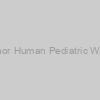 Single Donor Human Pediatric Whole Blood |
|
IWB1SPED031 |
Innovative research |
each |
EUR 322 |
|
|
|
Description: Single Donor Human Pediatric Whole Blood |
 Single Donor Human Pediatric Whole Blood |
|
IWB1SPED035 |
Innovative research |
each |
EUR 1453 |
|
|
|
Description: Single Donor Human Pediatric Whole Blood |
 Single Donor Human Pediatric Whole Blood |
|
IWB1SPED11141 |
Innovative research |
each |
EUR 322 |
|
|
|
Description: Single Donor Human Pediatric Whole Blood |
 Single Donor Human Pediatric Whole Blood |
|
IWB1SPED11145 |
Innovative research |
each |
EUR 1453 |
|
|
|
Description: Single Donor Human Pediatric Whole Blood |
 Single Donor Human Pediatric Whole Blood |
|
IWB1SPED15171 |
Innovative research |
each |
EUR 322 |
|
|
|
Description: Single Donor Human Pediatric Whole Blood |
 Single Donor Human Pediatric Whole Blood |
|
IWB1SPED15175 |
Innovative research |
each |
EUR 1453 |
|
|
|
Description: Single Donor Human Pediatric Whole Blood |
 Single Donor Human Pediatric Whole Blood |
|
IWB1SPED461 |
Innovative research |
each |
EUR 322 |
|
|
|
Description: Single Donor Human Pediatric Whole Blood |
 Single Donor Human Pediatric Whole Blood |
|
IWB1SPED465 |
Innovative research |
each |
EUR 1453 |
|
|
|
Description: Single Donor Human Pediatric Whole Blood |
 Single Donor Human Pediatric Whole Blood |
|
IWB1SPED7101 |
Innovative research |
each |
EUR 322 |
|
|
|
Description: Single Donor Human Pediatric Whole Blood |
 Single Donor Human Pediatric Whole Blood |
|
IWB1SPED7105 |
Innovative research |
each |
EUR 1453 |
|
|
|
Description: Single Donor Human Pediatric Whole Blood |
 Human Pediatric Peripheral Blood Mononuclear Cells |
|
ABC-TC4351 |
AcceGen |
1 vial |
Ask for price |
|
|
|
Description: Included Diagnoses: Normal, Asthma, Crohn's Disease, IBD, Ulcerative Colitis, Type I Diabetes. |
 Single Donor Human Pediatric SARS-Cov-2 Positive Serum |
|
ISERSPEDCOV2P100UL |
Innovative research |
each |
EUR 127 |
|
|
|
Description: Single Donor Human Pediatric SARS-Cov-2 Positive Serum |
 Single Donor Human Pediatric SARS-Cov-2 Positive Plasma |
|
IPLASPEDCOV2P100UL |
Innovative research |
each |
EUR 127 |
|
|
|
Description: Single Donor Human Pediatric SARS-Cov-2 Positive Plasma |
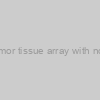 Pediatric malignant tumor tissue array with normal tissue as control |
|
PC701 |
TissueArray |
each |
EUR 306 |
|
Description: Pediatric malignant tumor tissue array with normal tissue as control, 70 cases/ 70 cores |
) Stomach cancer with matched adjacent normal tissue array (age<35 years old) |
|
ST8018 |
TissueArray |
each |
EUR 306 |
|
Description: Stomach cancer with matched adjacent normal tissue array (age<35 years old), including WHO grade, Borrmann grade and Lauren type, 40 cases/80 cores |
 with multiple IHC markers (PD-L1) Non-small cell lung cancer NSCLC tissue array (all samples are from recent 4 years) with multiple IHC markers (PD-L1 |
|
LC1461 |
TissueArray |
each |
EUR 552 |
|
Description: Non-small cell lung cancer NSCLC tissue array (all samples are from recent 4 years) with multiple IHC markers (PD-L1, ALK, ROS1+, CD70, HLA1, MPO, CD3 and CD8, containing stained intensity, location and cell type), including pathology grade, TNM and clinical stage, 73 cases/146 cores |
 ELISA Kit) Human Fecal calprotectin(fecal calprotectin) ELISA Kit |
|
QY-E05394 |
Qayee Biotechnology |
96T |
EUR 433.2 |
 Innovative Grade US Origin Bovine Brain Dura Matter |
|
IGBOBRDMF |
Innovative research |
each |
EUR 133 |
|
|
|
Description: Innovative Grade US Origin Bovine Brain Dura Matter |
 Innovative Grade US Origin Bovine Brain Dura Matter |
|
IGBOBRDMP |
Innovative research |
each |
EUR 133 |
|
|
|
Description: Innovative Grade US Origin Bovine Brain Dura Matter |
 Innovative Grade US Origin Bovine Brain Dura Matter |
|
IGBOBRDMS |
Innovative research |
each |
EUR 210 |
|
|
|
Description: Innovative Grade US Origin Bovine Brain Dura Matter |
 Innovative Grade US Origin Bovine Brain Dura Matter |
|
IGBOBRDMZ |
Innovative research |
each |
EUR 210 |
|
|
|
Description: Innovative Grade US Origin Bovine Brain Dura Matter |
 Innovative Grade US Origin Porcine Brain Dura Matter |
|
IGPCBRDMF |
Innovative research |
each |
EUR 133 |
|
|
|
Description: Innovative Grade US Origin Porcine Brain Dura Matter |
 Innovative Grade US Origin Porcine Brain Dura Matter |
|
IGPCBRDMP |
Innovative research |
each |
EUR 210 |
|
|
|
Description: Innovative Grade US Origin Porcine Brain Dura Matter |
 Innovative Grade US Origin Porcine Brain Dura Matter |
|
IGPCBRDMS |
Innovative research |
each |
EUR 210 |
|
|
|
Description: Innovative Grade US Origin Porcine Brain Dura Matter |
 Innovative Grade US Origin Porcine Brain Dura Matter |
|
IGPCBRDMZ |
Innovative research |
each |
EUR 133 |
|
|
|
Description: Innovative Grade US Origin Porcine Brain Dura Matter |
 ISOLATE Fecal DNA Kit |
|
BIO-52038 |
Bioline |
100 preps (Kit 2 x 50 preps) |
Ask for price |
 ISOLATE Fecal DNA Kit |
|
BIO-52082 |
Bioline |
50 preps |
Ask for price |
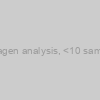 Collagen analysis, <10 samples |
|
80031 |
Chondrex |
Custom service |
EUR 174.84 |
|
Description: Collagen analysis |
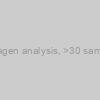 Collagen analysis, >30 samples |
|
80033 |
Chondrex |
Custom service |
EUR 162.66 |
|
Description: Collagen analysis |
 Collagenase assay, <10 samples |
|
80041 |
Chondrex |
Custom service |
EUR 155.7 |
|
Description: Collagenase assay |
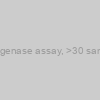 Collagenase assay, >30 samples |
|
80043 |
Chondrex |
Custom service |
EUR 143.52 |
|
Description: Collagenase assay |
) Mini Samples ELISA Kit for Galectin 3 (GAL3) |
|
MEA303Hu |
Cloud-Clone |
96Т |
EUR 756 |
|
|
) Mini Samples ELISA Kit for Caspase 3 (CASP3) |
|
MEA626Ra |
Cloud-Clone |
96Т |
EUR 821 |
|
|
) Mini Samples ELISA Kit for Cystin 1 (CYS1) |
|
MEJ301Hu |
Cloud-Clone |
96Т |
EUR 840 |
|
|
) Mini Samples ELISA Kit for Interleukin 3 (IL3) |
|
MEA076Hu |
Cloud-Clone |
96Т |
EUR 756 |
|
|
 Collagen analysis, 10-30 samples |
|
80032 |
Chondrex |
Custom service |
EUR 169.62 |
|
Description: Collagen analysis |
 Collagenase assay, 10-30 samples |
|
80042 |
Chondrex |
Custom service |
EUR 150.48 |
|
Description: Collagenase assay |
 Rapid Test Kit) Fecal Occult Blood (FOB) Rapid Test Kit |
|
abx092198-100l |
Abbexa |
100 µl |
EUR 287.5 |
 Rapid Test Kit) Fecal Occult Blood (FOB) Rapid Test Kit |
|
abx092198-1ml |
Abbexa |
1 ml |
EUR 2280 |
 Rapid Test Kit) Fecal Occult Blood (FOB) Rapid Test Kit |
|
abx092198-200l |
Abbexa |
200 µl |
EUR 675 |
 Antibody) Hemoglobin Fecal Occult Blood (FOB) Antibody |
|
abx024027-1mg |
Abbexa |
1 mg |
EUR 994.8 |
|
|
 Antibody) Hemoglobin Fecal Occult Blood (FOB) Antibody |
|
abx024028-1mg |
Abbexa |
1 mg |
EUR 994.8 |
|
|
 Antibody) Hemoglobin Fecal Occult Blood (FOB) Antibody |
|
abx024027-400l |
Abbexa |
400 µl |
Ask for price |
 Antibody) Hemoglobin Fecal Occult Blood (FOB) Antibody |
|
abx024027-80l |
Abbexa |
80 µl |
EUR 937.5 |
 Antibody) Hemoglobin Fecal Occult Blood (FOB) Antibody |
|
abx024028-400l |
Abbexa |
400 µl |
Ask for price |
 Antibody) Hemoglobin Fecal Occult Blood (FOB) Antibody |
|
abx024028-80l |
Abbexa |
80 µl |
EUR 937.5 |
 ELISA Kit) Mini Samples Mouse Interleukin 3 (IL3) ELISA Kit |
|
MEA076Mu-10x96wellstestplate |
Cloud-Clone |
10x96-wells test plate |
EUR 6290.41 |
|
|
|
Description: This is Double-antibody Sandwich Enzyme-linked immunosorbent assay for detection of Mini Samples Mouse Interleukin 3 (IL3). |
 ELISA Kit) Mini Samples Mouse Interleukin 3 (IL3) ELISA Kit |
|
MEA076Mu-1x48wellstestplate |
Cloud-Clone |
1x48-wells test plate |
EUR 623.21 |
|
|
|
Description: This is Double-antibody Sandwich Enzyme-linked immunosorbent assay for detection of Mini Samples Mouse Interleukin 3 (IL3). |
 ELISA Kit) Mini Samples Mouse Interleukin 3 (IL3) ELISA Kit |
|
MEA076Mu-1x96wellstestplate |
Cloud-Clone |
1x96-wells test plate |
EUR 838.87 |
|
|
|
Description: This is Double-antibody Sandwich Enzyme-linked immunosorbent assay for detection of Mini Samples Mouse Interleukin 3 (IL3). |
 ELISA Kit) Mini Samples Mouse Interleukin 3 (IL3) ELISA Kit |
|
MEA076Mu-5x96wellstestplate |
Cloud-Clone |
5x96-wells test plate |
EUR 3414.92 |
|
|
|
Description: This is Double-antibody Sandwich Enzyme-linked immunosorbent assay for detection of Mini Samples Mouse Interleukin 3 (IL3). |
 ELISA Kit) Mini Samples Mouse Interleukin 3 (IL3) ELISA Kit |
|
4-MEA076Mu |
Cloud-Clone |
-
Ask for price
-
Ask for price
-
Ask for price
|
- 10 plates of 96 wells
- 5 plates of 96 wells
- 1 plate of 96 wells
|
|
|
|
Description: Enzyme-linked immunosorbent assay based on the Double-antibody Sandwich method for detection of Mini Samples Mouse Interleukin 3 (IL3) in samples from n/a with no significant corss-reactivity with analogues from other species. |
) Mini Samples ELISA Kit for Nesfatin 1 (NES1) |
|
MEA242Mu |
Cloud-Clone |
96Т |
EUR 778 |
|
|
) Mini Samples ELISA Kit for Galectin 1 (GAL1) |
|
MEA321Hu |
Cloud-Clone |
96Т |
EUR 598 |
|
|
) Mini Samples ELISA Kit for Caspase 1 (CASP1) |
|
MEB592Mu |
Cloud-Clone |
96Т |
EUR 821 |
|
|
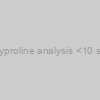 Hydroxyproline analysis <10 samples |
|
80061 |
Chondrex |
Custom service |
EUR 171.36 |
|
Description: Hydroxyproline analysis <10 samples |
) Mini Samples ELISA Kit for Kisspeptin 1 (KISS1) |
|
MEC559Mu |
Cloud-Clone |
96Т |
EUR 864 |
|
|
 For extracting HPV DNA from swab samples) AnaPrep HPV DNA Extraction Kit for swab samples (48) For extracting HPV DNA from swab samples |
|
Z1322007 |
Biochain |
1 kit (48 extractions) Including all required plastic disposables |
EUR 259 |
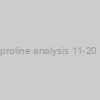 Hydroxyproline analysis 11-20 samples |
|
80062 |
Chondrex |
Custom service |
EUR 167.88 |
|
Description: Hydroxyproline analysis 11-20 samples |
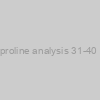 Hydroxyproline analysis 31-40 samples |
|
80064 |
Chondrex |
Custom service |
EUR 159.18 |
|
Description: Hydroxyproline analysis 31-40 samples |
) Control for Ckit, 6 samples (1.5mm) |
|
CKIT061 |
Pantomics |
1 |
EUR 102 |
|
Description: Gastrointestinal stroma tumors, 6 cores, 3 cases in duplicates showing strong, moderate and no expression of cKit molecule. |
 Antibody analysis - human >30 samples |
|
8005-3 |
Chondrex |
Custom service |
EUR 136.56 |
|
Description: Antibody analysis - human >30 samples |
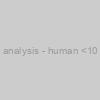 Antibody analysis - human <10 samples |
|
80051 |
Chondrex |
Custom service |
EUR 147 |
|
Description: Antibody analysis - human <10 samples |
) Mini Samples ELISA Kit for Sequestosome 1 (SQSTM1) |
|
MED198Hu |
Cloud-Clone |
96Т |
EUR 840 |
|
|
) Mini Samples ELISA Kit for Angiopoietin 1 (ANGPT1) |
|
MEA008Hu |
Cloud-Clone |
96Т |
EUR 598 |
|
|
) Mini Samples ELISA Kit for Pigment Epithelium Derived Factor (PEDF) |
|
MEB972Mu |
Cloud-Clone |
96Т |
EUR 821 |
|
|
 IFN alpha Serum Samples ELISA Kit |
|
55R-PB41110 |
Fitzgerald |
1 kit |
EUR 947 |
|
Description: ELISA IFN Alpha Serum Samples for use in the research laboratory |
 Antibody analysis - human 10-30 samples |
|
8005-2 |
Chondrex |
Custom service |
EUR 140.04 |
|
Description: Antibody analysis - human 10-30 samples |
 Mini Samples ELISA Kit for Asprosin |
|
MEA332Hu |
Cloud-Clone |
96Т |
EUR 756 |
|
|
 Mini Samples ELISA Kit for Asprosin |
|
MEA332Mu |
Cloud-Clone |
96Т |
EUR 778 |
|
|
 ELISA Kit) Mini Samples Mouse Interferon Alpha 3 (IFNa3) ELISA Kit |
|
MES761Mu-10x96wellstestplate |
Cloud-Clone |
10x96-wells test plate |
EUR 7641.3 |
|
|
|
Description: This is Double-antibody Sandwich Enzyme-linked immunosorbent assay for detection of Mini Samples Mouse Interferon Alpha 3 (IFNa3). |
 ELISA Kit) Mini Samples Mouse Interferon Alpha 3 (IFNa3) ELISA Kit |
|
MES761Mu-1x48wellstestplate |
Cloud-Clone |
1x48-wells test plate |
EUR 734.46 |
|
|
|
Description: This is Double-antibody Sandwich Enzyme-linked immunosorbent assay for detection of Mini Samples Mouse Interferon Alpha 3 (IFNa3). |
 ELISA Kit) Mini Samples Mouse Interferon Alpha 3 (IFNa3) ELISA Kit |
|
MES761Mu-1x96wellstestplate |
Cloud-Clone |
1x96-wells test plate |
EUR 997.8 |
|
|
|
Description: This is Double-antibody Sandwich Enzyme-linked immunosorbent assay for detection of Mini Samples Mouse Interferon Alpha 3 (IFNa3). |
 ELISA Kit) Mini Samples Mouse Interferon Alpha 3 (IFNa3) ELISA Kit |
|
MES761Mu-5x96wellstestplate |
Cloud-Clone |
5x96-wells test plate |
EUR 4130.1 |
|
|
|
Description: This is Double-antibody Sandwich Enzyme-linked immunosorbent assay for detection of Mini Samples Mouse Interferon Alpha 3 (IFNa3). |
 ELISA Kit) Mini Samples Mouse Interferon Alpha 3 (IFNa3) ELISA Kit |
|
4-MES761Mu |
Cloud-Clone |
-
Ask for price
-
Ask for price
-
Ask for price
|
- 10 plates of 96 wells
- 5 plates of 96 wells
- 1 plate of 96 wells
|
|
|
|
Description: Enzyme-linked immunosorbent assay based on the Double-antibody Sandwich method for detection of Mini Samples Mouse Interferon Alpha 3 (IFNa3) in samples from n/a with no significant corss-reactivity with analogues from other species. |
) Mini Samples ELISA Kit for Sialyltransferase 1 (SIAT1) |
|
MEM299Hu |
Cloud-Clone |
96Т |
EUR 924 |
|
|
) Mini Samples ELISA Kit for Indole 3 Acetic Acid (IAA) |
|
MEA737Ge |
Cloud-Clone |
96Т |
EUR 955 |
|
|
) Mini Samples ELISA Kit for Interleukin 1 Beta (IL1b) |
|
MEA563Bo |
Cloud-Clone |
96Т |
EUR 907 |
|
|
ELISA kit) Mini Samples for Interleukin 1 Beta (IL1b)ELISA kit |
|
MEA563Bo-10x96wellstestplate |
Cloud-Clone |
10x96-wells test plate |
EUR 7303.58 |
|
|
|
Description: This is Double-antibody Sandwich Enzyme-linked immunosorbent assay for detection of Mini Samples for Interleukin 1 Beta (IL1b) in serum, plasma, tissue homogenates, cell lysates, cell culture supernates and other biological fluids. |
ELISA kit) Mini Samples for Interleukin 1 Beta (IL1b)ELISA kit |
|
MEA563Bo-1x48wellstestplate |
Cloud-Clone |
1x48-wells test plate |
EUR 706.64 |
|
|
|
Description: This is Double-antibody Sandwich Enzyme-linked immunosorbent assay for detection of Mini Samples for Interleukin 1 Beta (IL1b) in serum, plasma, tissue homogenates, cell lysates, cell culture supernates and other biological fluids. |
ELISA kit) Mini Samples for Interleukin 1 Beta (IL1b)ELISA kit |
|
MEA563Bo-1x96wellstestplate |
Cloud-Clone |
1x96-wells test plate |
EUR 958.07 |
|
|
|
Description: This is Double-antibody Sandwich Enzyme-linked immunosorbent assay for detection of Mini Samples for Interleukin 1 Beta (IL1b) in serum, plasma, tissue homogenates, cell lysates, cell culture supernates and other biological fluids. |
ELISA kit) Mini Samples for Interleukin 1 Beta (IL1b)ELISA kit |
|
MEA563Bo-5x96wellstestplate |
Cloud-Clone |
5x96-wells test plate |
EUR 3951.31 |
|
|
|
Description: This is Double-antibody Sandwich Enzyme-linked immunosorbent assay for detection of Mini Samples for Interleukin 1 Beta (IL1b) in serum, plasma, tissue homogenates, cell lysates, cell culture supernates and other biological fluids. |
) Mini Samples ELISA Kit for Interleukin 1 Beta (IL1b) |
|
4-MEA563Bo |
Cloud-Clone |
-
Ask for price
-
Ask for price
-
Ask for price
|
- 10 plates of 96 wells
- 5 plates of 96 wells
- 1 plate of 96 wells
|
|
|
|
Description: Enzyme-linked immunosorbent assay based on the Double-antibody Sandwich method for detection of Mini Samples Interleukin 1 Beta (IL1b) in samples from Serum, plasma, tissue homogenates, cell lysates, cell culture supernates and other biological fluids with no significant corss-reactivity with analogues from other species. |
) Mini Samples ELISA Kit for Interleukin 1 Beta (IL1b) |
|
MEA563Ca |
Cloud-Clone |
96Т |
EUR 672 |
|
|
) Mini Samples ELISA Kit for Interleukin 1 Beta (IL1b) |
|
MEA563Hu |
Cloud-Clone |
96Т |
EUR 528 |
|
|
ELISA kit) Mini Samples for Interleukin 1 Beta (IL1b)ELISA kit |
|
MEA563Hu-10x96wellstestplate |
Cloud-Clone |
10x96-wells test plate |
EUR 4326.91 |
|
|
|
Description: This is Double-antibody Sandwich Enzyme-linked immunosorbent assay for detection of Mini Samples for Interleukin 1 Beta (IL1b) in serum, plasma, tissue homogenates, cell lysates, cell culture supernates and other biological fluids. |
ELISA kit) Mini Samples for Interleukin 1 Beta (IL1b)ELISA kit |
|
MEA563Hu-1x48wellstestplate |
Cloud-Clone |
1x48-wells test plate |
EUR 461.51 |
|
|
|
Description: This is Double-antibody Sandwich Enzyme-linked immunosorbent assay for detection of Mini Samples for Interleukin 1 Beta (IL1b) in serum, plasma, tissue homogenates, cell lysates, cell culture supernates and other biological fluids. |
ELISA kit) Mini Samples for Interleukin 1 Beta (IL1b)ELISA kit |
|
MEA563Hu-1x96wellstestplate |
Cloud-Clone |
1x96-wells test plate |
EUR 607.87 |
|
|
|
Description: This is Double-antibody Sandwich Enzyme-linked immunosorbent assay for detection of Mini Samples for Interleukin 1 Beta (IL1b) in serum, plasma, tissue homogenates, cell lysates, cell culture supernates and other biological fluids. |
ELISA kit) Mini Samples for Interleukin 1 Beta (IL1b)ELISA kit |
|
MEA563Hu-5x96wellstestplate |
Cloud-Clone |
5x96-wells test plate |
EUR 2375.42 |
|
|
|
Description: This is Double-antibody Sandwich Enzyme-linked immunosorbent assay for detection of Mini Samples for Interleukin 1 Beta (IL1b) in serum, plasma, tissue homogenates, cell lysates, cell culture supernates and other biological fluids. |
) Mini Samples ELISA Kit for Interleukin 1 Beta (IL1b) |
|
4-MEA563Hu |
Cloud-Clone |
-
Ask for price
-
Ask for price
-
Ask for price
|
- 10 plates of 96 wells
- 5 plates of 96 wells
- 1 plate of 96 wells
|
|
|
|
Description: Enzyme-linked immunosorbent assay based on the Double-antibody Sandwich method for detection of Mini Samples Interleukin 1 Beta (IL1b) in samples from Serum, plasma, tissue homogenates, cell lysates, cell culture supernates and other biological fluids with no significant corss-reactivity with analogues from other species. |
) Mini Samples ELISA Kit for Interleukin 1 Beta (IL1b) |
|
MEA563Mu |
Cloud-Clone |
96Т |
EUR 605 |
|
|
) Mini Samples ELISA Kit for Interleukin 1 Beta (IL1b) |
|
MEA563Ra |
Cloud-Clone |
96Т |
EUR 550 |
|
|
) Mini Samples ELISA Kit for Interleukin 1 Beta (IL1b) |
|
MEA563Rb |
Cloud-Clone |
96Т |
EUR 820 |
|
|
ELISA kit) Mini Samples for Interleukin 1 Beta (IL1b)ELISA kit |
|
MEA563Rb-10x96wellstestplate |
Cloud-Clone |
10x96-wells test plate |
EUR 6620.28 |
|
|
|
Description: This is Double-antibody Sandwich Enzyme-linked immunosorbent assay for detection of Mini Samples for Interleukin 1 Beta (IL1b) in serum, plasma, tissue homogenates, cell lysates, cell culture supernates and other biological fluids. |
ELISA kit) Mini Samples for Interleukin 1 Beta (IL1b)ELISA kit |
|
MEA563Rb-1x48wellstestplate |
Cloud-Clone |
1x48-wells test plate |
EUR 650.38 |
|
|
|
Description: This is Double-antibody Sandwich Enzyme-linked immunosorbent assay for detection of Mini Samples for Interleukin 1 Beta (IL1b) in serum, plasma, tissue homogenates, cell lysates, cell culture supernates and other biological fluids. |
ELISA kit) Mini Samples for Interleukin 1 Beta (IL1b)ELISA kit |
|
MEA563Rb-1x96wellstestplate |
Cloud-Clone |
1x96-wells test plate |
EUR 877.68 |
|
|
|
Description: This is Double-antibody Sandwich Enzyme-linked immunosorbent assay for detection of Mini Samples for Interleukin 1 Beta (IL1b) in serum, plasma, tissue homogenates, cell lysates, cell culture supernates and other biological fluids. |
ELISA kit) Mini Samples for Interleukin 1 Beta (IL1b)ELISA kit |
|
MEA563Rb-5x96wellstestplate |
Cloud-Clone |
5x96-wells test plate |
EUR 3589.56 |
|
|
|
Description: This is Double-antibody Sandwich Enzyme-linked immunosorbent assay for detection of Mini Samples for Interleukin 1 Beta (IL1b) in serum, plasma, tissue homogenates, cell lysates, cell culture supernates and other biological fluids. |
) Mini Samples ELISA Kit for Interleukin 1 Beta (IL1b) |
|
4-MEA563Rb |
Cloud-Clone |
-
Ask for price
-
Ask for price
-
Ask for price
|
- 10 plates of 96 wells
- 5 plates of 96 wells
- 1 plate of 96 wells
|
|
|
|
Description: Enzyme-linked immunosorbent assay based on the Double-antibody Sandwich method for detection of Mini Samples Interleukin 1 Beta (IL1b) in samples from Serum, plasma, tissue homogenates, cell lysates, cell culture supernates and other biological fluids with no significant corss-reactivity with analogues from other species. |
) Glycerol Assay Kit (For liquid samples) |
|
abx090674-1Kit |
Abbexa |
1 Kit |
EUR 735.6 |
|
|
) Mini Samples ELISA Kit for Interleukin 1 Alpha (IL1a) |
|
MEA071Mu |
Cloud-Clone |
96Т |
EUR 778 |
|
|
) Mini Samples ELISA Kit for Interleukin 1 Alpha (IL1a) |
|
MEA071Rb |
Cloud-Clone |
96Т |
EUR 820 |
|
|
ELISA kit) Mini Samples for Interleukin 1 Alpha (IL1a)ELISA kit |
|
MEA071Rb-10x96wellstestplate |
Cloud-Clone |
10x96-wells test plate |
EUR 6620.28 |
|
|
|
Description: This is Double-antibody Sandwich Enzyme-linked immunosorbent assay for detection of Mini Samples for Interleukin 1 Alpha (IL1a) in serum, plasma, tissue homogenates, cell lysates, cell culture supernates and other biological fluids. |
ELISA kit) Mini Samples for Interleukin 1 Alpha (IL1a)ELISA kit |
|
MEA071Rb-1x48wellstestplate |
Cloud-Clone |
1x48-wells test plate |
EUR 650.38 |
|
|
|
Description: This is Double-antibody Sandwich Enzyme-linked immunosorbent assay for detection of Mini Samples for Interleukin 1 Alpha (IL1a) in serum, plasma, tissue homogenates, cell lysates, cell culture supernates and other biological fluids. |
ELISA kit) Mini Samples for Interleukin 1 Alpha (IL1a)ELISA kit |
|
MEA071Rb-1x96wellstestplate |
Cloud-Clone |
1x96-wells test plate |
EUR 877.68 |
|
|
|
Description: This is Double-antibody Sandwich Enzyme-linked immunosorbent assay for detection of Mini Samples for Interleukin 1 Alpha (IL1a) in serum, plasma, tissue homogenates, cell lysates, cell culture supernates and other biological fluids. |
ELISA kit) Mini Samples for Interleukin 1 Alpha (IL1a)ELISA kit |
|
MEA071Rb-5x96wellstestplate |
Cloud-Clone |
5x96-wells test plate |
EUR 3589.56 |
|
|
|
Description: This is Double-antibody Sandwich Enzyme-linked immunosorbent assay for detection of Mini Samples for Interleukin 1 Alpha (IL1a) in serum, plasma, tissue homogenates, cell lysates, cell culture supernates and other biological fluids. |
) Mini Samples ELISA Kit for Interleukin 1 Alpha (IL1a) |
|
4-MEA071Rb |
Cloud-Clone |
-
Ask for price
-
Ask for price
-
Ask for price
|
- 10 plates of 96 wells
- 5 plates of 96 wells
- 1 plate of 96 wells
|
|
|
|
Description: Enzyme-linked immunosorbent assay based on the Double-antibody Sandwich method for detection of Mini Samples Interleukin 1 Alpha (IL1a) in samples from Serum, plasma, tissue homogenates, cell lysates, cell culture supernates and other biological fluids with no significant corss-reactivity with analogues from other species. |
) Mini Samples ELISA Kit for Matrix Metalloproteinase 2 (MMP2) |
|
MEA100Mu |
Cloud-Clone |
96Т |
EUR 778 |
|
|
ELISA kit) Mini Samples for Matrix Metalloproteinase 2 (MMP2)ELISA kit |
|
MEA100Mu-10x96wellstestplate |
Cloud-Clone |
10x96-wells test plate |
EUR 6290.41 |
|
|
|
Description: This is Double-antibody Sandwich Enzyme-linked immunosorbent assay for detection of Mini Samples for Matrix Metalloproteinase 2 (MMP2) in serum, plasma, tissue homogenates and other biological fluids. |
ELISA kit) Mini Samples for Matrix Metalloproteinase 2 (MMP2)ELISA kit |
|
MEA100Mu-1x48wellstestplate |
Cloud-Clone |
1x48-wells test plate |
EUR 623.21 |
|
|
|
Description: This is Double-antibody Sandwich Enzyme-linked immunosorbent assay for detection of Mini Samples for Matrix Metalloproteinase 2 (MMP2) in serum, plasma, tissue homogenates and other biological fluids. |
ELISA kit) Mini Samples for Matrix Metalloproteinase 2 (MMP2)ELISA kit |
|
MEA100Mu-1x96wellstestplate |
Cloud-Clone |
1x96-wells test plate |
EUR 838.87 |
|
|
|
Description: This is Double-antibody Sandwich Enzyme-linked immunosorbent assay for detection of Mini Samples for Matrix Metalloproteinase 2 (MMP2) in serum, plasma, tissue homogenates and other biological fluids. |
ELISA kit) Mini Samples for Matrix Metalloproteinase 2 (MMP2)ELISA kit |
|
MEA100Mu-5x96wellstestplate |
Cloud-Clone |
5x96-wells test plate |
EUR 3414.92 |
|
|
|
Description: This is Double-antibody Sandwich Enzyme-linked immunosorbent assay for detection of Mini Samples for Matrix Metalloproteinase 2 (MMP2) in serum, plasma, tissue homogenates and other biological fluids. |
) Mini Samples ELISA Kit for Matrix Metalloproteinase 2 (MMP2) |
|
4-MEA100Mu |
Cloud-Clone |
-
Ask for price
-
Ask for price
-
Ask for price
|
- 10 plates of 96 wells
- 5 plates of 96 wells
- 1 plate of 96 wells
|
|
|
|
Description: Enzyme-linked immunosorbent assay based on the Double-antibody Sandwich method for detection of Mini Samples Matrix Metalloproteinase 2 (MMP2) in samples from Serum, plasma, tissue homogenates and other biological fluids with no significant corss-reactivity with analogues from other species. |
) Cyno monkey, 22 organs, 22 samples (2mm) |
|
ASM221 |
Pantomics |
1 |
EUR 300 |
|
Description: Normal tissues of 22 major organs from a single cyno monkey |
) Mini Samples ELISA Kit for Pepsin (PP) |
|
MEA632Mu |
Cloud-Clone |
96Т |
EUR 820 |
|
|
) Mini Samples ELISA Kit for Renin (REN) |
|
MEA889Mu |
Cloud-Clone |
96Т |
EUR 778 |
|
|
) Mini Samples ELISA Kit for Fructosamine-3-Kinase (FN3K) |
|
MEJ094Hu |
Cloud-Clone |
96Т |
EUR 840 |
|
|
Per mirare specificamente al sistema nervoso centrale, abbiamo esplorato la consegna di AAV9 al liquido cerebrospinale (CSF). L’iniezione di CSF ha mirato efficacemente ai motoneuroni e ha limitato l’espressione genica al sistema nervoso centrale, fornendo un percorso di consegna alternativo e requisiti di produzione potenzialmente inferiori per i pazienti più grandi e più grandi. I nostri risultati supportano l’uso di AAV9 per il trasferimento genico al sistema nervoso centrale per i disturbi nelle popolazioni pediatriche.

